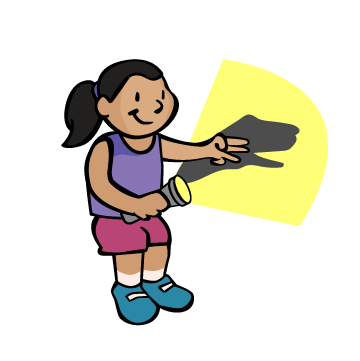Boston Children's Museum
308 Congress Street, Boston, MA 02210
617-426-6500
© Boston Children’s Museum 2025
Website Design by JackrabbitAlong with all of the literacy benefits to having children write and act in their own plays, in this activity they will also learn to read, listen to and tell stories; to work effectively and cooperatively in an ensemble; to create a play with a beginning, middle and end based on an original idea; and to plan, improvise and write or record a play that includes the “five W’s”: who, what, where, when, and why. And by introducing children to Chinese shadow puppet history and/or stories, they will grow to understand the visual arts in relation to history and cultures.
This activity is a follow-up to the Shadow Puppets activity.
Setup your “Shadow Puppet Theater” with the white sheet as the screen and a light source shining behind it.

This is a follow-up activity to Shadow Puppets – try that one out before you put on your play!
Ask your students if they have ever seen a play before. What kind of play was it? Was it happy, funny or sad? Was it a play or a musical? If they could write their own play, what kind of play would it be?
If you have done any research on Chinese shadow puppets, this would be a great opportunity to introduce anything you have learned. The history of these puppet shows is rich and diverse. See the Suggestions section (in the “Make it Better” step) for a list of books you can show to your students.
Work with your team to create a play using all of your characters!
After 10–20 minutes, when teams have begun the process of writing their story, bring the whole group together to talk about what they have done so far. Ask each team to share with the others what their story will be about. If they haven’t decided yet, have them share what their characters are, and ask the rest of the class to help brainstorm what kind of story they might tell. Ask teams to focus on the “5 W’s”: Who is in their story (the characters)? What will these characters do? Why will they do it? Where does their story happen? When does it take place? Suggest that each team decides on a title for their play before you send them back to finish writing. This discussion should last no more than a few minutes.
Send them back to finish writing their play. For teams that finish early, have them rehearse their play together. When every team has finished writing their play, gather everyone together as an audience in front of the Shadow Puppet Theater and ask for a team to volunteer to perform first. Remember that this is a shadow play, so the performers will be behind the screen, projecting shadows onto the sheet for the audience to see. Before each team performs, have them share with the audience what the title of their play is. Turn the light on behind the screen, dim the room lights or turn them off and then watch your students perform their play!